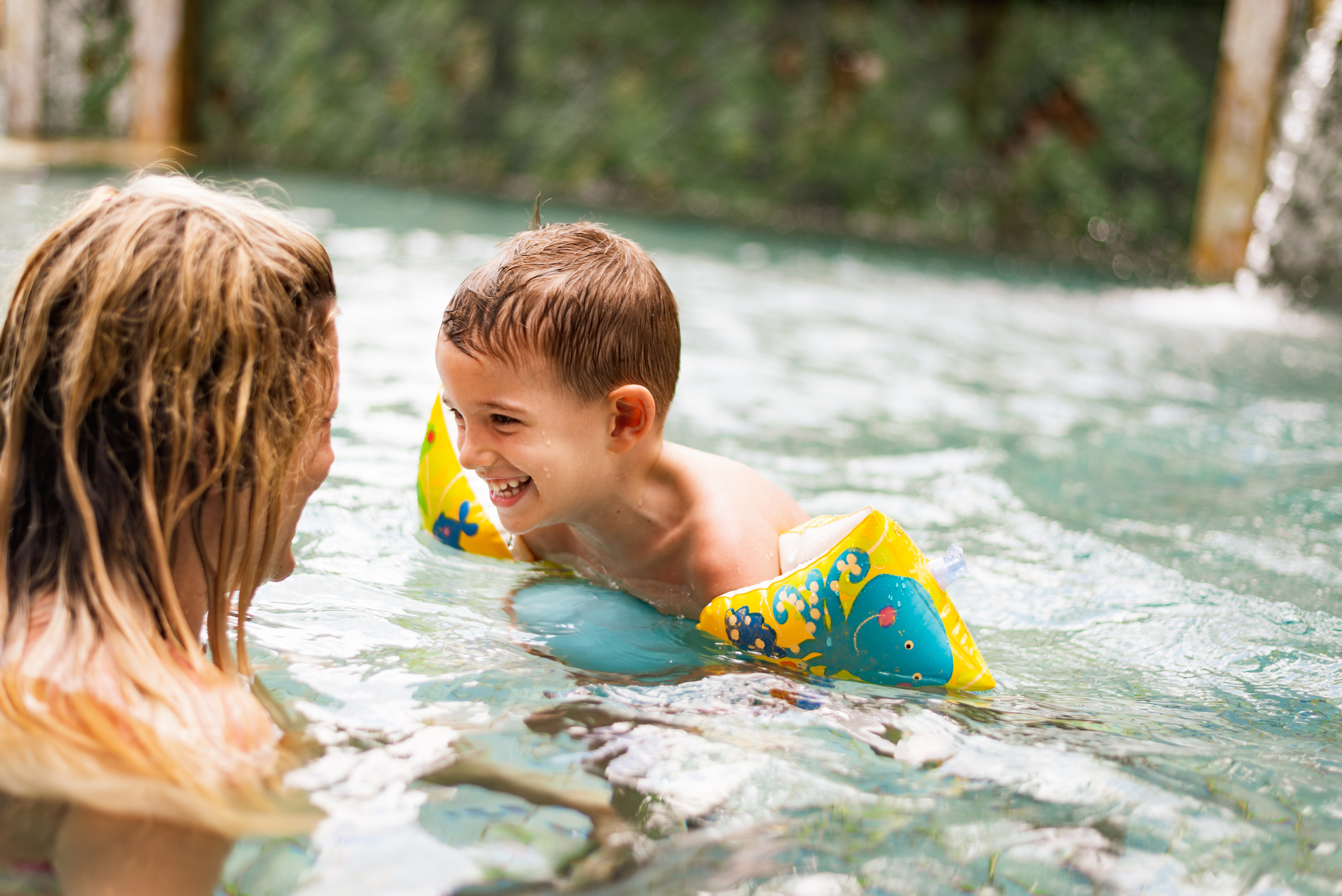- 877.684.1613
- Schedule a Tour

Memorial Day marks the unofficial launch of summer. As we approach the holiday, we’re taking a moment to recognize National Learn to Swim Day. It’s celebrated on the third Saturday in May each year and provides the perfect opportunity to remind families and children about the importance of water safety and learning how to swim. We’ve compiled some helpful tips for making your next trip to the beach, or pool, both fun and safe.
Submerging the head. Introduce children to the sensation of wetness by gently trickling water on their head and down their faces. Make sure you are doing this playfully, so your child will pick up on your positive mood. Go at their pace and as they feel more comfortable, you can work up to submerging the entire head.
Splashing. Demonstrate that water is safe and will not hurt your child by touching the water. Encourage them to splash with you, to show them that it can be fun, too!
Blowing bubbles in the water. Have your child either get into the water to do this or remain at the edge of the water, based on their comfort level. Most children love bubbles, so this is a great way to start teaching them about holding their breath underwater.
Learning to float. Start by guiding them onto their back and gently holding them in the floating position from underneath. As they begin to become comfortable with floating, remove your hand so they are floating without assistance. This same technique can be used with floating on their stomach. Once they have mastered the float, try adding basic kicking and arm movements while you provide support.
Practicing with goggles. Introduce goggles during your bath routine. Goggles can take some getting used to and the tub is a great place to work out insecurities. Start by wearing goggles yourself. Show your child how they work by putting your face underwater to look around. Once your child becomes comfortable with wearing goggles, you can ask them to hold their breath and put their eyes underwater. As incentive, sink some toys for them to discover below the surface!
Playing games. Manipulatives, such as bath toys or even household sponges, can be used to help children practice their motor skills while in the water. Have your child retrieve sinking toys in the shallow end of the water. This will encourage them to move freely and practice submerging. As they become more comfortable, you can gradually toss the toys into deeper areas of the water.
Mind the details. Children do not have a lot of body fat, so if the water is cold, their body will get stiff and they won’t want to learn anything. Whether it’s the pool or the tub, make sure the water is an appropriate temperature. Pool-ready attire can also be a game changer for little learners. Swimsuits are ideal because the fabric won’t absorb water, whereas cotton boardshorts and T-shirts will hold water and weigh down your child. Carrying extra water weight can make learning a new skill even more challenging.
